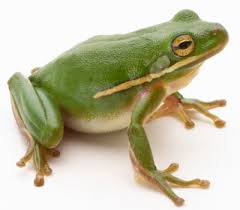Se-tenant: Commemorative Issue - Wonderful Animals - SI-201901 (Cinderellas 2019)
Commemorative Issue - Wonderful Animals - SI-201901 (Cinderellas 2019)
01 January (Cinderellas ) within release Sandy Island goes into circulation Se-tenant Commemorative Issue - Wonderful Animals - SI-201901 face value 3.15 Fantasy
| Se-tenant Commemorative Issue - Wonderful Animals - SI-201901 in catalogues | |
|---|---|
| Colnect codes: | Col: SA-PO 2019-1/2/3 |
Se-tenant is horizontal format.
Cinderella stamp issued by Fabio Vaccarezza, an Italian philatelist and printed by Bruce Henderson of New Zealand. Claimed to have been printed by the fictional "Chan Hui Shudian Printing S.A.". The issue date indicated above is according to the Capricornia Post website.Also in the issue Sandy Island:
- Se-tenant - Commemorative Issue - Wonderful Animals - SI-201901 face value 3.15;
- Se-tenant - Commemorative Issue "Peculiar Animals" - SI-201902 face value 3*1.10;
- Full Pane - Peculiar Animals face value 10*1.10;
- Stamp - Peculiar Animals, Lions face value 1.10;
- Stamp - Peculiar Animals, Mail Cat face value 1.10;
- Stamp - Peculiar Animals, Turtle face value 1.10;
- Full Pane - Wonderful Animals face value 10.70;
- Stamp - Wonderful Animals, Butterfly face value 0.95;
- Stamp - Wonderful Animals, Frog face value 1.10;
- Stamp - Wonderful Animals, Squirrel face value 1.10;
Se-tenant Commemorative Issue - Wonderful Animals - SI-201901 it reflects the thematic directions:
Amphibians are ectothermic, anamniotic, four-limbed vertebrate animals that constitute the class Amphibia. In its broadest sense, it is a paraphyletic group encompassing all tetrapods, excluding the amniotes (tetrapods with an amniotic membrane, such as modern reptiles, birds, and mammals). All extant (living) amphibians belong to the monophyletic subclass Lissamphibia, with three living orders: Anura (frogs), Urodela (salamanders), and Gymnophiona (caecilians). Evolved to be mostly semiaquatic, amphibians have adapted to inhabit a wide variety of habitats, with most species living in freshwater, wetland or terrestrial ecosystems (such as riparian woodland, fossorial and even arboreal habitats). Their life cycle typically starts out as aquatic larvae with gills known as tadpoles, but some species have developed behavioural adaptations to bypass this.
Animals are multicellular, eukaryotic organisms of the kingdom Animalia (also called Metazoa). All animals are motile, meaning they can move spontaneously and independently, at some point in their lives. Their body plan eventually becomes fixed as they develop, although some undergo a process of metamorphosis later on in their lives. All animals are heterotrophs: they must ingest other organisms or their products for sustenance.
Butterflies are insects in the macrolepidopteran clade Rhopalocera from the order Lepidoptera, which also includes moths. Adult butterflies have large, often brightly coloured wings, and conspicuous, fluttering flight. The group comprises the large superfamily Papilionoidea, which contains at least one former group, the skippers (formerly the superfamily "Hesperioidea") and the most recent analyses suggest it also contains the moth-butterflies (formerly the superfamily "Hedyloidea"). Butterfly fossils date to the Paleocene, which was about 56 million years ago. Butterflies have the typical four-stage insect life cycle. Winged adults lay eggs on the food plant on which their larvae, known as caterpillars, will feed. The caterpillars grow, sometimes very rapidly, and when fully developed, pupate in a chrysalis. When metamorphosis is complete, the pupal skin splits, the adult insect climbs out, and after its wings have expanded and dried, it flies off. Some butterflies, especially in the tropics, have several generations in a year, while others have a single generation, and a few in cold locations may take several years to pass through their whole life cycle. Butterflies are often polymorphic, and many species make use of camouflage, mimicry and aposematism to evade their predators. Some, like the monarch and the painted lady, migrate over long distances. Many butterflies are attacked by parasites or parasitoids, including wasps, protozoans, flies, and other invertebrates, or are preyed upon by other organisms. Some species are pests because in their larval stages they can damage domestic crops or trees; other species are agents of pollination of some plants. Larvae of a few butterflies (e.g., harvesters) eat harmful insects, and a few are predators of ants, while others live as mutualists in association with ants. Culturally, butterflies are a popular motif in the visual and literary arts.
A frog is any member of a diverse and largely carnivorous group of short-bodied, tailless amphibians composing the order Anura[(coming from the Ancient Greek ἀνούρα, literally 'without tail'). The oldest fossil "proto-frog" Triadobatrachus is known from the Early Triassic of Madagascar (250 million years ago), but molecular clock dating suggests their split from other amphibians may extend further back to the Permian, 265 million years ago. Frogs are widely distributed, ranging from the tropics to subarctic regions, but the greatest concentration of species diversity is in tropical rainforest. Frogs account for around 88% of extant amphibian species. They are also one of the five most diverse vertebrate orders. Warty frog species tend to be called toads, but the distinction between frogs and toads is informal, not from taxonomy or evolutionary history.
Squirrels are members of the family Sciuridae a family that includes small or medium-sized rodents. The squirrel family includes tree squirrels, ground squirrels (including chipmunks and prairie dogs, among others), and flying squirrels. Squirrels are indigenous to the Americas, Eurasia, and Africa, and were introduced by humans to Australia. The earliest known fossilized squirrels date from the Eocene epoch, and among other living rodent families, the squirrels are most closely related to the mountain beaver and dormice





